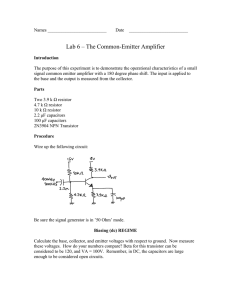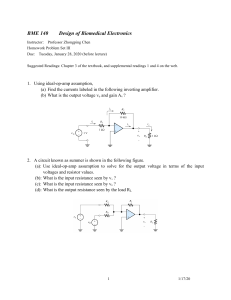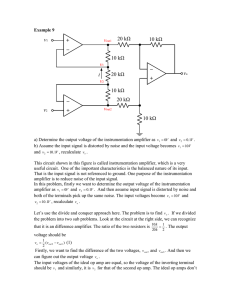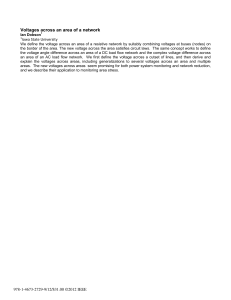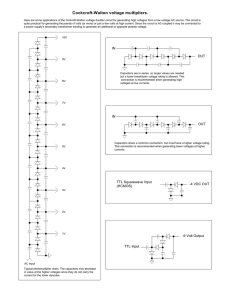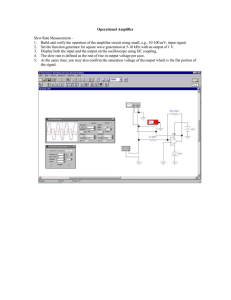1.6 kΩ 200 Ω + 1 kΩ
advertisement
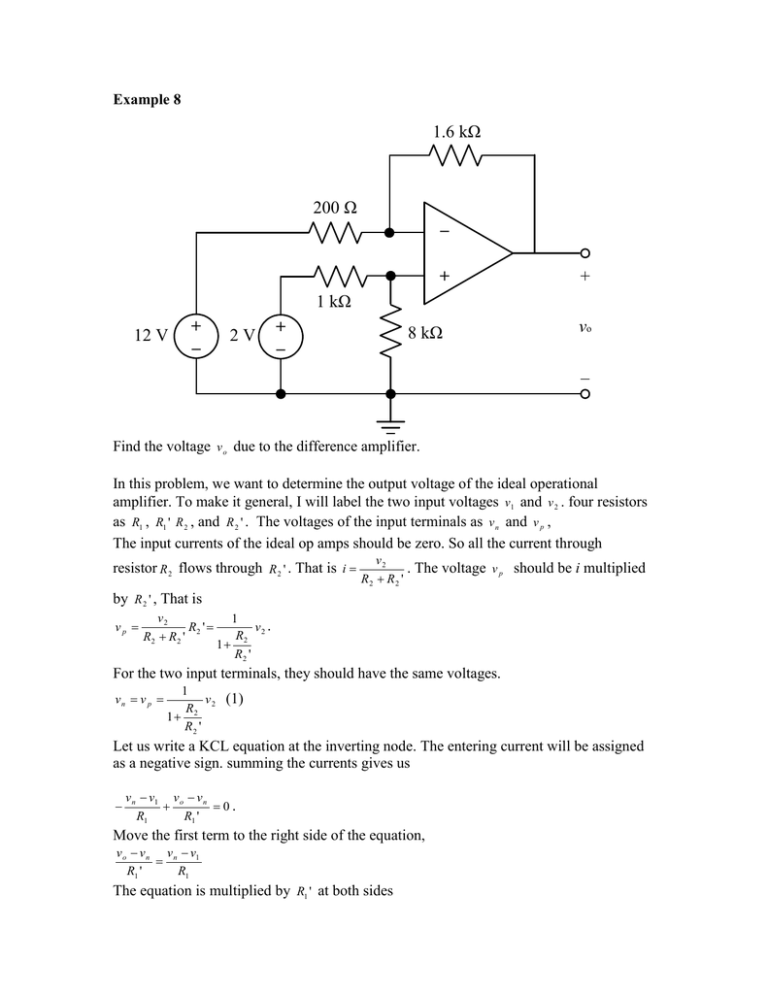
Example 8 1.6 kΩ 200 Ω _ + + 1 kΩ 12 V + _ 2V + _ 8 kΩ vo _ Find the voltage v o due to the difference amplifier. In this problem, we want to determine the output voltage of the ideal operational amplifier. To make it general, I will label the two input voltages v1 and v 2 . four resistors as R1 , R1 ' R 2 , and R 2 ' . The voltages of the input terminals as v n and v p , The input currents of the ideal op amps should be zero. So all the current through resistor R 2 flows through R 2 ' . That is i v2 . The voltage v p should be i multiplied R2 R2 ' by R 2 ' , That is vp v2 R2 ' R2 R2 ' 1 v . R2 2 1 R2 ' For the two input terminals, they should have the same voltages. vn v p 1 v (1) R 2 1 2 R2 ' Let us write a KCL equation at the inverting node. The entering current will be assigned as a negative sign. summing the currents gives us v n v1 v o v n 0. R1 R1 ' Move the first term to the right side of the equation, v o v n v n v1 R1 ' R1 The equation is multiplied by R1 ' at both sides vo v n vn v1 R1 ' R1 vo vn v n v1 R1 ' R1 Collect the coefficients of v n R1 ' R' )v n 1 v1 (2) R1 R1 v o (1 Substitute (1) into (2) vo (1 R1 ' R' )vn 1 v1 R1 R1 R 1 1 R1 ' 1 R1 ' R1 ' R1 ' R' v o (1 ) v2 v1 v 2 1 v1 (3) R R R1 R1 R1 R1 1 2 1 2 R2 ' R2 ' R R If the resistance ratio 1 2 , equation (3) becomes R1 ' R2 ' v o v1 R1 ' (v 2 v1 ) . R1 This op amp circuit is a difference amplifier. If R1 R1 ' , the circuit is a subtractor. vo R1 ' (v 2 v1 ) 8 (2 12 ) 80V R1


